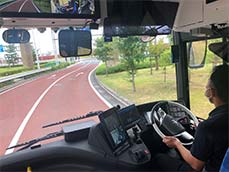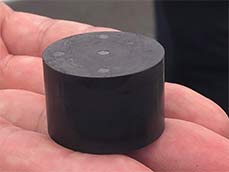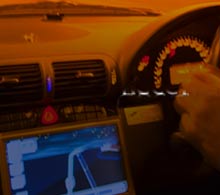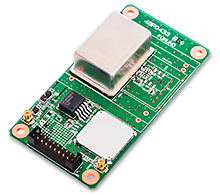Articles for ITS market V2X, Becoming increasingly important in autonomous driving
Autonomous driving demonstration test held in Tokyo
The history and practical applications of autonomous driving began in 2000 in the United States. The first autonomous racing conducted by the U.S. Defense Advanced Research Projects Agency (DARPA) got attention. That race became a big trigger for the mass production of LiDAR units that could shoot lasers in a 360-degree direction. The researchers moved to major companies of IT and autonomous parts companies after the event and they started to make practical applications in autonomous driving. China, following the United States, has begun a government program to develop autonomous driving. Japan, meanwhile, has been working on these projects since 2014 as part of its Cross-ministerial Strategic Innovation Promotion Program (SIP).
I participated in an autonomous driving demonstration test that was held in Tokyo in September 2020. According to Mr. Kuzumaki, the SIP-adus program director at Toyota Motor Corporation Japan, the program is underway despite the delays caused by the COVID-19. The demonstration test presented concrete examples of technology that shares traffic conditions on main lines with DSRC and technology that shares vehicle location information measured by magnetic markers with autonomous driving car through communication. It was confirmed that the SIP, which is in its second phase is focused on V2X, which aims to make road-to-vehicle communication practical.
 Autonomous driving car for the demonstration test (Made by Kanazawa University)
Autonomous driving car for the demonstration test (Made by Kanazawa University)
 The rear of an autonomous driving car
The rear of an autonomous driving car
It performs data processing such as image recognition.
760MHz Dedicated Short Range Communications (DSRC)
The autonomous driving car that can communicate wirelessly with the DSRC antennas installed in the test area is a modified Lexus RH450h that was built by Kanazawa University under contract to SIP. For image recognition, a monocular cameras, LiDAR units and 77 GHz millimeter wave radars are mounted on the car. For satellite positioning it uses a PT-G1 autonomous navigation unit equipped with a GNSS receiver from Furuno Electric Co. There are 30 760 MHz DSRC antennas in Tokyo for autonomous driving applications. At this demonstration test site, DSRC antennas are transmitting the colors and lighting times of traffic lights. According to the people involved with SIP, "In some situations, such as when there is backlighting, it is difficult to recognize the colors of traffic lights with a camera Therefore DSRC at intersections is an essential element in the practical application of autonomous driving. After the experiment using DSRC, we observed a demonstration test to acquire vehicle location information with magnetic markers.
Magnetic marker
The vehicle used in the vehicle location recognition demonstration test was a modified version of the SORA fuel cell electrified vehicle bus, which was jointly developed by Toyota Motor Corporation and Hino Motors, Ltd. Magnetic markers are buried in the road at 2-meter intervals and at 50 cm intervals near intersections. The system detects magnetic markers with on-vehicle sensors to acquire vehicle location information. If there are other vehicles in the dedicated lane while the car is driving automatically, it must temporarily switch to manual operation. Currently it's automatic level 2, but in the future it aims to be level 4 with no one in the driver's seat. According to the people involved with Toyota this is just a demonstration test at the moment and we haven't had any concrete discussions about its practical application.
Writer introduction

Mr. Kenji Momota Automotive journalist
His major is the world automotive industry and he is also familiar with the energy industry, IT and the aging society problem as the related fields. He acts around the world based in Japan and USA and writes for the general magazines, the technology journals and the automotive related media etc.
He is also commentator of motor race and world's motor show on TV program based on his career of the driver of Indy Racing League and NASCAR. In recent years, he has been covering about a paradigm shift from developed countries to developing countries, the motorized vehicle like EV and the telematics.
FURUNO ITS Journal
Click here for the latest articles after 2022 (in Japanese)2022
- The "realistic" self-driving roadmap shown by the Japanese government and a hands-on report on the latest Subaru EyeSight X
- Will FCVs (Fuel Cell Vehicles) Become Popular? ~New Movement in Toyota and Honda~
- The 'Complete' online sales of new cars start in Japan. Will this new way of buying cars take root?
- Many Firsts! On-Site Report from Tokyo Auto Salon 2022 - The author, who knows what goes on behind the scenes, looks back on 40 years of history. -
2021
- "Moving toward zero traffic fatalities for four-wheeled and two-wheeled vehicles globally in 2050" ~Experience on Honda's latest safety technologies~
- Tsuneishi Shipbuilding's building and DX, an exclusive visit to the main factory
- Japan's Smart City: New Moves toward Practical Use
- When will self-driving buses (service cars) be put to "full-scale" practical use?
- Utilization vehicle data during disasters
- Toyota-led Connected Technology to Transform Commercial Vehicle Business -From light trucks to large trucks and buses-
- Toyota enters the connected car "Personalization" business
- Japanese automakers' carbon-neutral strategies swept up in ESG investment
- Drive experience of the latest autonomous vehicle models and advanced driving support systems
- Will carbon neutrality accelerate the trend to strengthen LCA (Life Cycle Assessment)?
- Semiconductor shortage exposes realities of the automotive industry
- Online Autonomous Driving Contest Enhancing development of Human Resources
2020
- What happens to CASE when gas cars are banned in Japan?
- When will Flying Cars be launched?
- Expectation vs. reality:Autonomous Driving in Japan
- V2X, Becoming increasingly important in autonomous driving
- Technology of Subaru “EyeSight X”
- Lifestyle-oriented French cars gain popularity in Japan
- Human-oriented smart cities are wanted
- MaaS and CASE, how would automotive industry change after COVID-19?
- The beginning of virtualization era, triggered by COVID-19
- Trend of EV shift and consumer demands
- TOYOTA Press conference about ADAS - Releasing algorithm for "sudden acceleration suppression during attempted sudden acceleration" free of charge -
- The Japanese automotive industry in 2020 - 3 turning points -
- "Using a smartphone while driving" and "Level 3 automated driving"
2019
- Motor show business model is at a turning point - Tokyo Motor Show Report -
- Commercialization and monetization of MaaS - ITS World Congress Singapore Report -
- Android Automotive pays attention to V2X - Report from the Frankfurt Motor Show 2019 in Germany -
- Automobile Distribution Revolution and DCM (Data Communication Module)
- Connected business potential and newly proposed "eMaaS" by Honda
- 5G services for practical use are multiplying
- Connectivity technologies attracting attention due to frequent traffic accidents
- Shanghai Motor Show report -SUV, EV, Automated car & 5G-
- Drone Business roadmap and updates to Michibiki (Quasi-Zenith Satellite System)
- MaaS (Mobility as a Service) "town development." Full-scale promotion for a national project
- CES organizer states "Data Period in 2020s." Transformation of the Automotive Industry in CES, US "-CES2019 Report-"
- "Return to Origin" directed towards the age of change, automatic operation and connectivity
2018
- New proposal for Private Car Automated Driving Level and other Hot 5G Technology Topics
- Standardized EV charging infrastructure concerns in Europe, US, Japan and China - Kobe EVS 31 field report -
- Touring a pure car carrier and a test drive of the latest hybrid car
- Planning stage products are exhibited at the newly established visualized mobility service "TOYOTA MOBILITY SHOWROOM".
- Potential “Community Car-share” program promoted by local residents
- CES Asia Report 2108
- Companies attempt new Vehicle-to-Infrastructure communications, including traffic volume measurements and vehicle positioning. -ITS Asia Pacific Forum in Fukuoka-
- Geneva show in Switzerland. Flying cars and MaaS (Mobility as a Service) were hot topics.
- EV (Electric Vehicle) proposals by country
- MaaS competition through service mobilization, M & A and technical field collaboration is accelerating. - The CES 2018 Report -
2017
- Big data’s initiative and fight for the automotive industry. Cooperation among companies becomes increasingly important.
- Connected car and road-to-vehicle communication automatic operation
- ETC (Electronic Toll Collection) and ETC2.0. Current situation and projected future
- Rapid development of sharing economy
- Germany is first to recognize level 3 automated driving
- ITS EU 2017 Field Reports -Automatic Operation and the eCall-
- From Infotainment to ITS, the competitive area is spreading in the car big data industry.
- GTC (GPU Technology Conference) Report and the de facto standardization of AI (artificial intelligence)
- Renesas' new challenge! "e-AI Solution" and "Renesas Autonomy"
- The Automobile industry is shifting from a manufacturing industry to a service industry.
- The movement toward accident countermeasures for aging drivers in Japan
- Fusion of ride sharing and fully automated driving is advancing in the USA.
2016
- Overview of the Quasi-Zenith Satellite System (QZSS) and advancements toward full-scale practical use including the Tokyo Olympic Games - G-space EXPO 2016 report-
- Japan’s automated driving project "SIP-adus" will be a large demonstration experiment.
- The International Home Care & Rehabilitation Exhibition. There were many car manufactures with exhibits booths at this show.
- Japanese car manufacturers starting to concentrate on strengthening the ADAS system
- A new movement of legislation for autonomous cars
- Cyber Security and “AGL”, the new OS for automotive are hot topics in the connected car industry
- “High precision 3D map” the key future of autonomous car and pedestrian dead reckoning
- Chinese “BAT” is accelerating their business in the EV (Electric Vehicle) market
- Tesla's original connection to Taiwan and the new transportation system technologies.
- "The main topic" of the Geneva Motor Show was how to strengthen "pedestrian protection"
- The probe data business is getting more competitive
- Reporting directly from the 2016 CES show "Data services will soon become the main revenue source of automotive industry"
2015
- Do the automated driving systems need the GNSS (Global Navigation Satellite System) ?
- ETC Version 2.0 is coming soon. A new service was announced at the Tokyo Motor Show and the possibility that is could be used as a device for older drivers.
- "Connected Horizon" and "eHorizon". Germany's leading parts supplier accelerates strengthening of "Big Data" for business



 760 MHz DSRC
760 MHz DSRC V2I device that communicates between mainline traffic and merged traffic (Metropolitan Expressway No. 1 Haneda, Tokyo Line)
V2I device that communicates between mainline traffic and merged traffic (Metropolitan Expressway No. 1 Haneda, Tokyo Line) Demonstration of autonomous driving car by a fuel cell electrified vehicle bus (around Haneda Airport Terminal 3)
Demonstration of autonomous driving car by a fuel cell electrified vehicle bus (around Haneda Airport Terminal 3) SORA, inside the bus
SORA, inside the bus Magnetic marker
Magnetic marker GPS/GNSS Receiver&Chips and Modules (positioning and timing)
GPS/GNSS Receiver&Chips and Modules (positioning and timing)